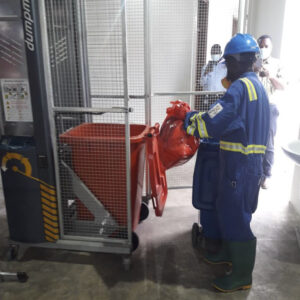Clinical waste, also known as medical waste, encompasses various materials that have been contaminated by biological, chemical, or infectious agents. This waste can be generated from hospitals, clinics, laboratories, and other healthcare settings. Some common examples include discarded syringes, contaminated dressings, expired medications, and biomedical waste from medical research.
Clinical waste incineration should be performed promptly to prevent the accumulation of hazardous materials in healthcare facilities. The temporary storage of medical waste should be carried out in secure containers or designated areas, with regular pickups by licensed waste management companies. Delaying incineration could lead to the proliferation of pathogens and increase the risk of infectious outbreaks, endangering both healthcare workers and the general public.
Incineration is one of the most effective methods for treating clinical waste due to its ability to destroy harmful pathogens and reduce waste volume significantly. The high temperatures reached during the incineration process ensure the complete destruction of infectious microorganisms, rendering the waste safe for final disposal. Additionally, incineration minimises the risk of cross-contamination and prevents hazardous materials from reaching landfills or the environment.
The incineration of clinical waste is subject to regulations and guidelines established by local, national, and international authorities. These guidelines aim to ensure the safe handling, transportation, and disposal of medical waste while also promoting environmentally responsible practices. Healthcare facilities must adhere to these regulations to protect public health and prevent potential legal consequences.
Clinical waste incineration is a vital aspect of responsible healthcare waste management. The proper timing of incineration, compliance with regulations, and consideration of environmental impacts all contribute to a sustainable and safe healthcare system. By prioritising efficient and responsible disposal methods, healthcare facilities can play a significant role in protecting public health and the environment for generations to come.

To find out more about the medical range of incinerators available from Addfield click here
To learn more about the MP500 Click here
Read How the NHS Transformed their approach to Medical Waste with Addfield Case Study Click here
Read the Vaccination Centre Medical Waste Incinerator Case Study Click here
Want to learn more about Medical Waste Visit these pages :
https://addfield.com/what-is-medical-waste-incineration/
https://addfield.com/how-does-a-medical-waste-incinerator-work/


